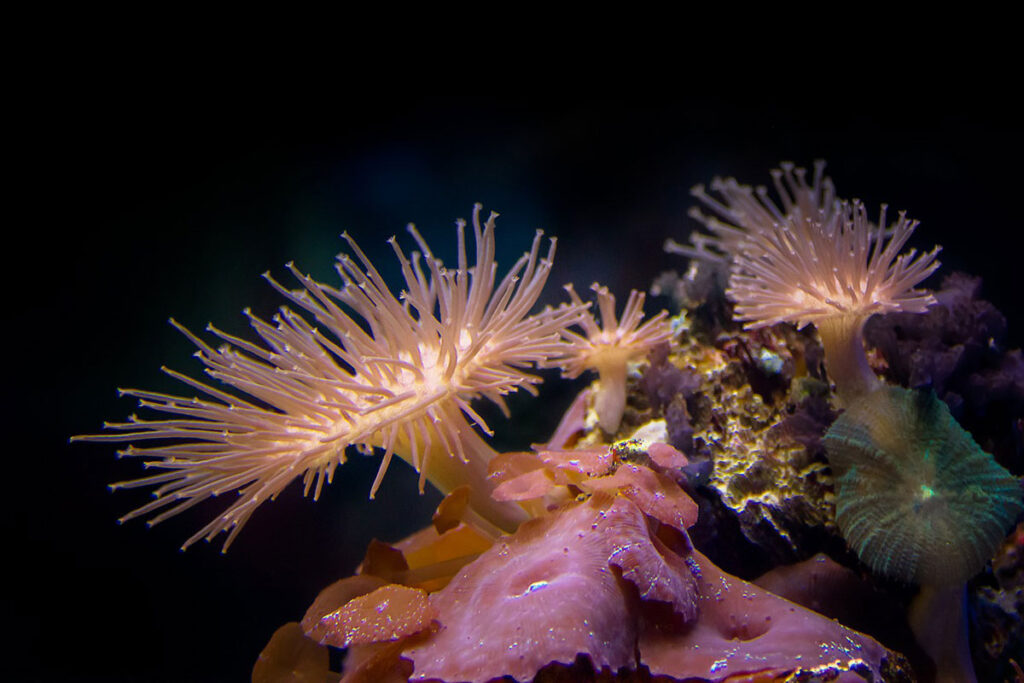The UK has published its new “Green List” of countries where foreign travel is allowed without the need to quarantine on return. Many of these are islands and great diving destinations.
1. Madeira
Four hundred kilometres north of Tenerife, to the west of Morocco, lies the archipelago of Madeira. It includes the islands of Madeira and Porto Santo which offer excellent diving. It is also a good place for whale watching with sperm and pilot whales year-long. There are several marine reserves including Garajau, created in 1986 on the southern coast of Madeira island near the town of Funchal.

Some of the best dives in Madeira include Arco da Badajeira – a seamount 100 m offshore and the Madeirense shipwreck patrolled by giant grouper.
2. Malta
The three Maltese islands lie at the centre of the Mediterranean, 93 km south of Sicily and 288 km north of Africa. With clear waters and rocky scenery the islands are very good for diving. Indeed, two of her dive sites are amongst the best in Europe: namely the Blue Hole in Gozo and Cirkewwa in Malta.

3. Barbados
Great for wreck diving, Barbados is also said to be home to the second-largest hawksbill turtle nesting population in the Caribbean. This is because of the Barbados Sea Turtle working to restore local turtle populations. They also protect leatherback and green turtles.

Although you probably won’t see big pelagics here, there are many interesting smaller animals including frogfish and seahorses.
One of the best wreck dives is the Stavronikita, sunk as an artificial reef in the Folkestone marine park in 1978. On the Atlantic coast Consett Bay is a good dive in calm conditions. For a chance to see Eagle rays and turtles check out the Boot.
4. Antigua
The best diving in Antigua is in the south of the island, around English Harbour. The north is shallow and quite sandy, but calm and good for beginners. The sea is always warm in Antigua, with surface temperatures never dropping below around 26 oC. From August to October water temperature rises to over 28 oC.

5. Cayman Islands
The Cayman Islands also hosts one of the best dives in the World: Bloody Bay Wall on Little Cayman. This is currently number 20 on the 100 Best Dives list.
When to dive the Cayman Islands? April and May are a good time to go. The weather is warm throughout the year but June to November is the hurricane season and the seas may be rougher during that time. The islands are busiest during winter.

6. Dominica
Dominica’s reefs are rocky: there are lots of corals here but they sit on boulders and walls rather than on reefs laid down by coral. Dominica has many invertebrates: sponges, crabs, sea fans, shrimps, crinoids, sea urchins; and also many small fish. The best diving is in the south, around Scotts Head, with a huge numbers of schooling fish and even on occasions hammerhead sharks.

7. Grenada
Grenada’s most famous dive site is the Bianca C, the largest wreck in the Caribbean. This Italian passenger ship sunk in 1961 is covered in life with visiting barracuda and eagle rays. Carriacou is also a good diving area.
Apart from the Bianca C there are many other wrecks. For less experienced there is the Molinere Underwater Sculpture Park was created in 2006 by Jason deCaires Taylor, the first of several of his works now in place underwater. Corals have colonised the figures turning the park into an artificial reef. For more advanced divers Fisherman’s Paradise, where the Atlantic meets the Caribbean at the extreme south-west of Grenada, is a great dive.

8. Turks and Caicos
The Turks and Caicos Islands consist of 40 islands, the most popular of which for divers are Grand Turk, Salt Cay and Providenciales. The island chains are separated by the 1.8km-deep Turks Island Passage where humpback whales migrate. They are famous for their wall dives dropping off down to the deeps.

